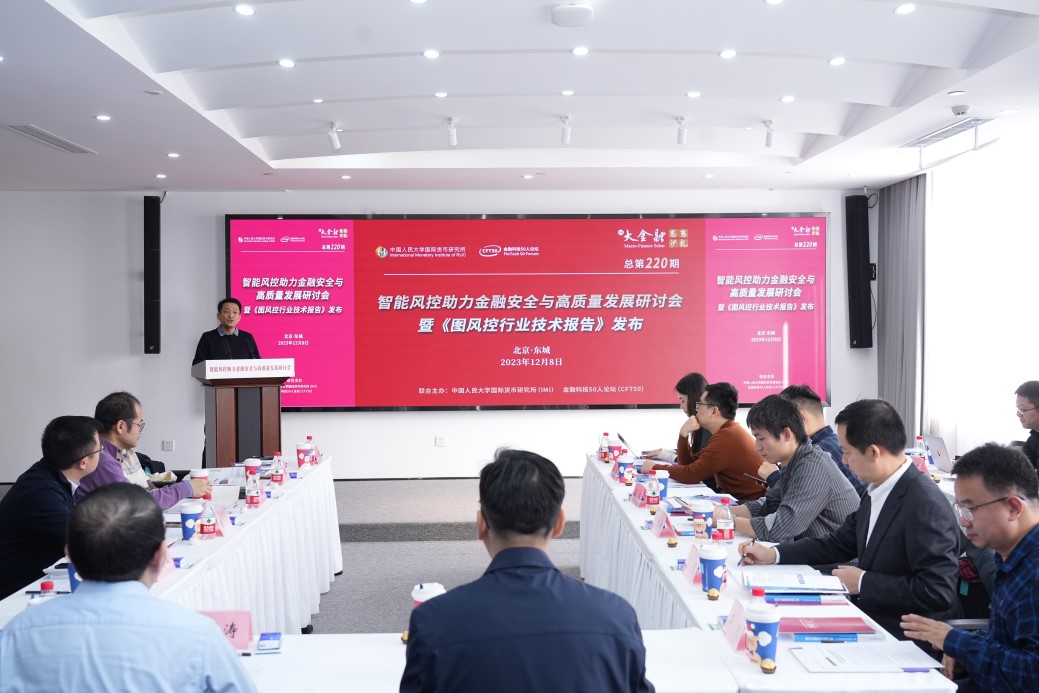Macro-Finance Salon (No. 220) and “Seminar on Intelligent Risk Control Boosts Financial Security and High-Quality Development”
2024-01-12 IMIOn December 8th, the Macro-Finance Salon (Issue No. 220) and the “Seminar on Intelligent Risk Control Boosts Financial Security and High-Quality Development”, jointly organized by the International Monetary Institute (IMI) of Renmin University of China and the CFT50, were held in Beijing. This salon also witnessed the release of the “Graph-Based Risk Control Industry Technical Report” white paper.

On the conference, Shi Chuan, Professor and Ph.D. supervisor from the School of Computer Science at Beijing University of Posts and Telecommunications delivered a keynote speech. Wang Weiqiang, Chief Scientist of Ant Security Lab, presided over the unveiling ceremony of the “Graph-Based Risk Control Industry Technical Report” white paper. Other distinguished participants include Zhou Daoxu, Director of the Financial Security Research Center at the Institute of Financial Technology at Tsinghua University, Yang Tao, Deputy Director of the National Financial and Development Laboratory, Wang Shuo, Director of Innovation at Everbright Technology, Li Bowen, Head of the Experimental Center at the Beijing National Financial Technology Certification Center, and Hong Chuntao, General Manager of the Graph Computing Business Unit at Ant Group. Qu Qiang, Assistant Director of the International Monetary Institute of Renmin University of China, chaired the conference.
Professor Shi Chuan’s speech was titled “Intelligent Risk Control - Graph-Based Industry Technology”. Shi emphasized that amid the ongoing wave of digitalization and the increasingly important new digital risk control, graph-based risk control algorithms, including neural networks and graph-based anomaly detection methods, have provided new insights and technologies for risk control in the digital era. In the future, user relationship graphs, fund transaction graphs, and supply chain relationship graphs may become key points for solving risk control issues using graph intelligence methods. Regarding the underlying infrastructure of graph-based risk control, there are still challenges such as the need for real-time online data reading and writing capabilities and large-scale offline analysis capabilities. Lastly, he introduced specific graph-based risk control systems and products, including Tugraph and GeSec developed by Ant Group, emphasizing their leading position in large-scale data processing and efficient risk control.
Translated by Yin Duolan
